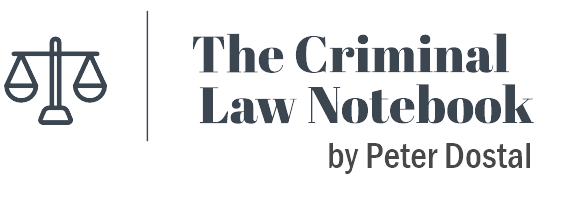Enumerated Purposes of Sentencing
| This page was last substantively updated or reviewed January 2021. (Rev. # 100327) |
General Principles
The purposes of sentencing are laid out in section 718 of the Criminal Code:
- Purpose
718. The fundamental purpose of sentencing is to contribute, along with crime prevention initiatives, to respect for the law and the maintenance of a just, peaceful and safe society by imposing just sanctions that have one or more of the following objectives:
- (a) to denounce unlawful conduct;
- (b) to deter the offender and other persons from committing offences;
- (c) to separate offenders from society, where necessary;
- (d) to assist in rehabilitating offenders;
- (e) to provide reparations for harm done to victims or to the community; and
- (f) to promote a sense of responsibility in offenders, and acknowledgment of the harm done to victims and to the community.
R.S., 1985, c. C-46, s. 718; R.S., 1985, c. 27 (1st Supp.), s. 155; 1995, c. 22, s. 6.
- Fundamental Purpose
The fundamental purpose as stated is that there be "respect for the law" and the maintenance of a "just, peaceful and safe society."[1]
This fundamental purpose will generally take precedent over the welfare of the accused.[2]
- How Public is Protected
The public is protected "through sanctions a court imposes upon a person...[e]ach codified objective of sentencing is designed to further the protection of the community."[3]
- Objectives Will Vary By Case
There is no single "sentencing objective [that] trumps the other". It is to "the sentencing judge to determine which objective or objectives merit the greatest weight, given the particulars of the case."[4]
In the Canadian system, "the respective importance of prevention, deterrence, retribution and rehabilitation will vary according to the nature of the crime and the circumstances of the offender". None of these factors can be excluded from consideration.[5]
- Meaning of Emphasized Objectives
Where statutes or courts declare that certain objectives are to be emphasized as primary, it would then be prohibited for a court to emphasize secondary objectives over the primary ones.[6]
- ↑
R v Whicher, 2002 BCCA 336 (CanLII), 165 CCC (3d) 535, per Hall JA (3:0)
R v Priest, 1996 CanLII 1381 (ON CA), 110 CCC (3d) 289, per Rosenberg JA - ↑
R v Cole, 2004 CanLII 58282 (QC CM) per Discepola J
R v Jackson, 1977 CanLII 3243 (NS CA), 21 NSR (2d) 17 (NSCA), per MacKeigan JA
R v Smith, 1987 CanLII 64 (SCC), [1987] 1 SCR 1045, per Lamer J
R v Sweeney, 1992 CanLII 4030 (BC CA), 71 CCC (3d) 82, per Hutcheon JA
- ↑ R v Berner, 2013 BCCA 188 (CanLII), 297 CCC (3d) 69, per curiam
- ↑ R v Nasogaluak, 2010 SCC 6 (CanLII), [2010] 1 SCR 206, per LeBel J (9:0), at para 43 ("... No one sentencing objective trumps the others and it falls to the sentencing judge to determine which objective or objectives merit the greatest weight, given the particulars of the case. The relative importance of any mitigating or aggravating factors will then push the sentence up or down the scale of appropriate sentences for similar offences. The judge’s discretion to decide on the particular blend of sentencing goals and the relevant aggravating or mitigating factors ensures that each case is decided on its facts, subject to the overarching guidelines and principles in the Code and in the case law.")
- ↑
R v Lyons, 1987 CanLII 25 (SCC), [1987] 2 SCR 309, per La Forest J (5:2), at para 26 ("... In a rational system of sentencing, the respective importance of prevention, deterrence, retribution and rehabilitation will vary according to the nature of the crime and the circumstances of the offender. No one would suggest that any of these functional considerations should be excluded from the legitimate purview of legislative or judicial decisions regarding sentencing.")
- ↑
R v Friesen, 2020 SCC 9 (CanLII), per Wagner CJ and Rowe J, at para 104
Topics
- Denunciation and Deterrence (718(a), (b))
- Separation from Society (718(c))
- Rehabilitation (718(d))
- Offence-Specific Sentencing Objectives (718.01 and 718.02)
